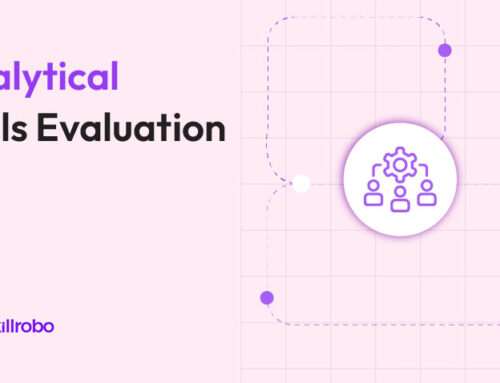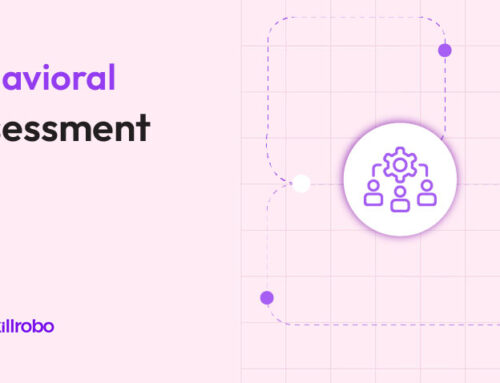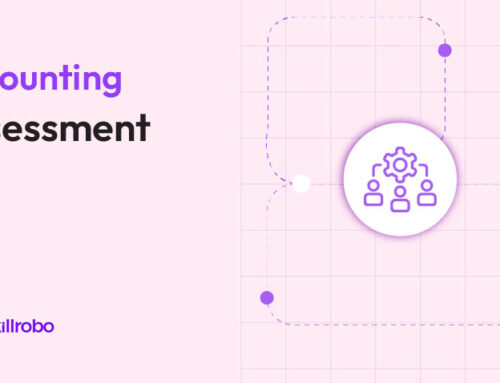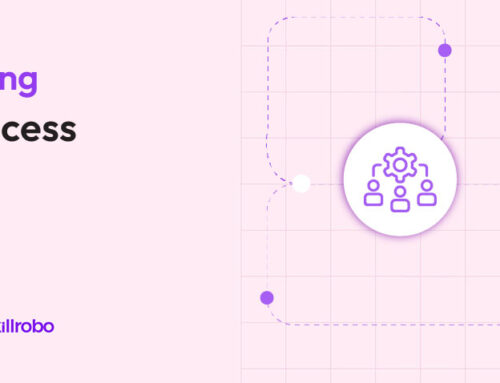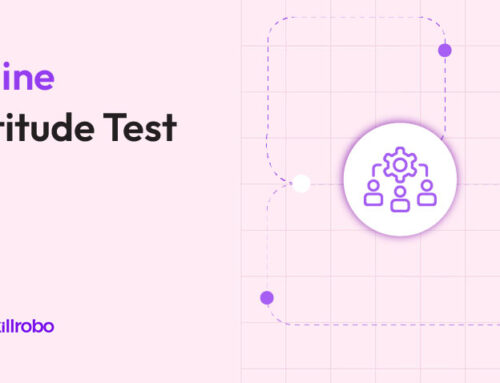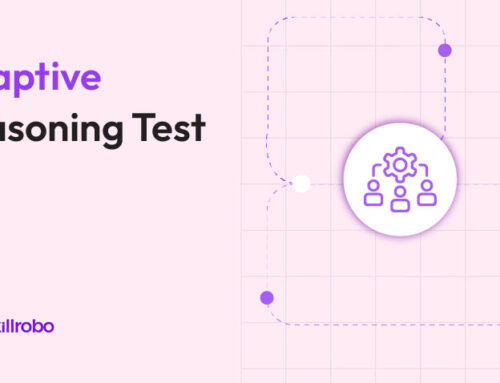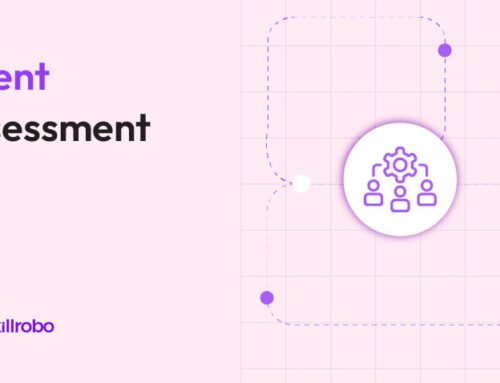Table of Contents
Related articles
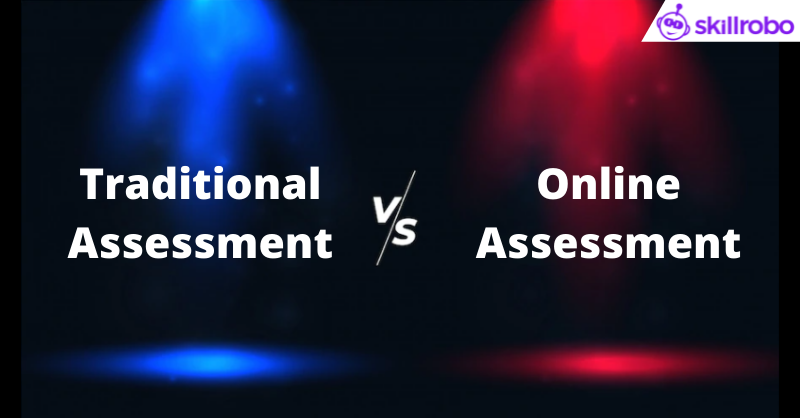
Building a high-quality workforce gives organizations the winning edge in the fiercely competitive market. A substantial amount of time and money is allocated to build a talented and competent workforce. Comprehensive skill assessments are a must to hire the best talent. Not just during the hiring process, skill evaluations are required to evaluate the skill level of existing employees to identify the skill gaps. Once skill gaps are identified, employees are sent to appropriate training programs to close the skill gaps.
Pre-screening test process must include an assessment of role/job-related skills and certain characteristics associated with efficient employees. Traditional assessment methods are more focused on evaluating the job readiness of the candidate. Online assessment platforms are growing in popularity due to the comprehensive approach they bring to hiring. Candidate assessment tools enable the hiring team to identify the most able and willing candidates that are the most rewarding to work with. Organizations’ fierce hunt for talent is made more meaningful and effective by using modern recruitment methods.
Traditional Assessment Methods at a Glance
Recruiters have relied upon conventional recruitment processes for ages now. Hiring teams have derived several benefits by using traditional recruitment methods to recruit employees that have played crucial roles in defining the organization. Over time, traditional recruitment methods are slowly being replaced by alternative modern methods like pre-employment screening software, job simulations, situational judgment tests, and integrity tests. Let us take a look at some of the conventional recruitment processes that have been in practice for decades.
Local newspaper advertisements –
One of the fastest and most effective ways to spread the word about job openings is through local newspaper advertisements. They are easily available and almost every household buys the local newspaper. It is also one of the simplest forms of recruitment and the most effective one too with a wide reach.
Local employment office postings –
Several organizations use local unemployment offices as an instrument for recruitment. Candidates looking for a job list themselves at unemployment offices, so the likelihood of finding potential hires is high.
Temporary hiring agencies –
Several temporary agencies specialize in finding the right candidate for specific job requirements. These agencies are essentially a group of experienced recruitment professionals that have solid sourcing and hiring skills. They will be able to source and shortlist potential hires as per your business requirement and help you find the right fit for open job positions within your organization.
Internal staffing –
Resources from within the organization itself may match the skill requirements for some open job positions. Internal staffing is a very successful way of fulfilling open job positions. The internal hiring program is not only a quick way of fulfilling open job positions, but also a safe method since you are already aware of the employee’s aptitude and attitude and the standard of work you can expect from them.
Networking –
HR professionals thrive on their professional networks. From staying updated on industry trends to tracking competitor trends to filling niche candidate requirements – professional networks are highly useful. The hiring team can make inquiries within their network to find the availability of candidates for open requirements.
Conventional hiring methods have been used by organizations for several years to successfully find the right fit for open positions. Hiring teams are adept at using these methods for finding the right candidate for various job roles within the organization. The level of comfort is high while using conventional methods mainly due to their simplicity. Although several advantages can be attributed to using conventional hiring methods, they have certain drawbacks that can be overcome by using online assessment software. What are the areas that conventional skill assessment tools lack?
Recruitment sources –
The range of interaction platforms and sourcing talent is limited in traditional hiring methods. Visibility and access are limited to interaction platforms like seminars, employment exchanges, workshops, advertisements, referrals, internal promotions, and internal job boards.
Time and cost of recruiting –
Conventional hiring methods are labor intensive. Recruitment teams sift through a pile of resumes to find prospective hires. The time for sourcing increases further when the recruitment team is dependent on external hiring agencies. Only after the agency identifies potential hires can the hiring team schedule interviews. The cost of posting advertisements, evaluating, interviewing, and onboarding candidates is comparatively high for traditional hiring methods.
Lack of transparency and visibility –
Manual hiring methods lack transparency and visibility into the status of each stage in the recruitment process. There is a large element of vagueness and guesswork in conventional hiring methods. Recruiters come to know the result of the recruitment process only at the end of it. Without the required visibility the hiring team is unable to pause or change the direction of the hiring process midway.
Superficial skill assessment –
Conventional skill assessments do not evaluate the skills of candidates completely. Only superficial knowledge or learning is evaluated by these methods. Important soft skills required to fit well into the role are not evaluated by these assessments.
Reporting and analytics –
Instant reports and analytics of candidate performance are not available to the hiring team.
Modern Skill Assessment Methods
Modernization of recruitment began with the advent of the Internet. From expanding the scope of sourcing profiles to accelerating the hiring process, online assessment tools for recruitment bring several benefits to the hiring process. Among the early improvements that the Internet brought to the recruitment process was online job portals.
Job portals serve the same purpose as placing an advertisement in the local newspaper for job openings or registering with the local unemployment office but with a much wider scope for sourcing potential hires. Added to this, the popularity of social media networks provides the hiring team access to a vast pool of candidates within very short durations.
Skill assessment software is the next best thing that the Internet has brought to the recruitment process. Online pre-employment assessment tests are skill assessment software that enables a comprehensive evaluation of candidate skills. These tests ensure that job-related skills as well as key behavioural and personality traits required for the role are evaluated.
Online tests can be administered from anywhere via email links. These assessments are conducted in a secure browser environment that prevents fraudulent practices.
What are Online Pre-Employment Assessments?
Screening through candidate profiles is not only time-consuming but also inefficient. A substantial amount of the productive work hours of recruiters is spent on scanning through candidate profiles. Moreover, manual profile screening lacks standardization in evaluation parameters and the chances of falling for false information provided by candidates is more. Is there a faster and more efficient way of screening candidates? Pre-employment skill assessments.
Pre-employment skill assessments evaluate candidates across the same parameters. These tests help the hiring team quantify the expertise of candidates according to the skills that matter most for that role. Standard reporting and analytics of the candidate’s performance enable the hiring team to easily spot high-performing candidates. For effective evaluation of prospective hires, the hiring team can combine various test types.
Online candidate assessment tools are of great help to the hiring team in making informed recruitment decisions. They are also effective in gauging the likelihood of the candidate succeeding in the role of interest by comparing performance across different test types. These tests quickly and accurately identify the top performer among several applicants and provide deeper insights into their skills and aptitude. Pre-employment assessments can be shared with multiple candidates at the same time.
Cost and time savings is a major advantage of using pre-employment assessments. Online assessments do away with the stationary costs that are associated with conventional assessment methods.
The candidate experience can be further enriched by adopting engaging and interactive testing methods like gamification and simulations. Additional layers of protection can be added in digital assessments for a secured exam environment. Processes like marking and feedback are much faster in online pre-employment assessments when compared to traditional assessments.
There is a fine line of difference between pre-employment tests and assessments. Tests refer to a series of media-based or test-based questions or challenges aimed at testing a candidate’s skill in a specific area/role. A skill assessment test covers 3-4 skill areas related to the specific role. The average time for these tests is 15 minutes. A pre-employment assessment on the other hand combines several tests to offer the hiring team a full spectrum of insights about the candidate. Online assessment software enables the hiring team to recruit the right person for the role.
Traditional Assessments versus Online Assessments
The recruitment teams have used conventional skill assessments for decades now. Traditional assessment methods are best practices that have been developed over the years on strong underlying principles like fairness, reliability, validity, and accuracy. Let us compare online assessment software with traditional assessment methods.
| Attribute | Traditional Skill Assessment | Online Skill Assessments |
|---|---|---|
| Talent sourcing | Seminars, workshops, recruitment agencies, internal promotions, referrals, internal job boards | Unlimited sources for finding talent via the Internet, including social media channels. |
| Scope of evaluation | Limited to job-related skill evaluation | A comprehensive evaluation of job-related skills, behavioral traits, and personality traits. |
| Performance feedback | Receiving performance feedback takes a few hours to a day | Instant reports and analytics are made available to the hiring team for making informed hiring decisions |
| Test content | The content of traditional evaluations is passive | Rich multimedia content is used to make the assessment more engaging and interactive |
| Cheating and fraud prevention | Most of the conventional assessments depend on people for proctoring. Human dependency opens up the scope for bias and errors. | Remote proctoring for online assessments is effective in fraud prevention. The secure browsing environment monitors the online activity of the candidate throughout the test. |
| Role-based evaluation | Conventional assessments are not flexible, they have pre-set evaluations for each role | Pre-employment skill assessments provide the flexibility to choose the tests based on the requirements of the role. For example, assessment for the role of accountant must combine math, analytical skills, accountancy, communication, and general aptitude tests. |
| Geographical barriers | Traditional assessments are constrained by geographical and social boundaries. | Online assessments are beyond geographical and social boundaries. |
| Hiring decisions | Results from disparate sources need to be summed up to get an overall performance report. Decision-making is delayed. | Disparate test results are summed up and presented as a comprehensive report to the hiring team instantly. Informed hiring decisions can be taken immediately by the hiring team. |
| Quick and effective screening | Screening resumes is a labor-intensive process via traditional assessments. Recruitment teams spend a substantial amount of time screening resumes rather than strategic activities | Online pre-employment software screens several resumes within short durations. Test administration, writing, evaluation, and reporting are done within minutes |
| Legitimate screening | Candidate resumes tend to contain false information, which the hiring team may not be able to identify. The information on profiles may not completely reflect the true potential of the candidate | Online screening tests focus on evaluating the true potential of the candidate rather than information provided on candidate profiles. |
| Scale of hiring | Conventional assessments are most effective when it comes to hiring for a limited number of open positions. They are not suited for large-scale recruitment drives or campus recruitment | Online employment assessments are capable of hiring several candidates within a short duration. Large-scale hiring can be effectively automated through online skill assessment software. |
Conclusion
Conventional recruitment processes and online assessment platforms are both important for the hiring team. Traditional hiring tools like interviews, written evaluations, and internal hiring have proved their mettle by enabling organizations to hire suitable candidates for various job positions. Simplicity and familiarity are the two main aspects that draw recruiters to conventional hiring methods. Online assessment software is based on technological advancements that are much needed to stay ahead of the competition. Candidate assessment tools help the hiring team to hire at scale and effectively.
Skillrobo is a pre-employment skill assessment software that empowers hiring teams with a powerful hiring platform for quick and effective hiring. Fully customizable tests from Skillrobo can be used by the hiring team to screen candidates for various roles across industries.
To explore quick and effective hiring, Sign Up for the free trial of Skillrobo.
Related Blogs: 10 Unique Ways How to Cheat in Online Assessment and How to Prevent

Building a high-quality workforce gives organizations the winning edge in the fiercely competitive market. A substantial amount of time and money is allocated to build a talented and competent workforce. Comprehensive skill assessments are a must to hire the best talent. Not just during the hiring process, skill evaluations are required to evaluate the skill level of existing employees to identify the skill gaps. Once skill gaps are identified, employees are sent to appropriate training programs to close the skill gaps.
Pre-screening test process must include an assessment of role/job-related skills and certain characteristics associated with efficient employees. Traditional assessment methods are more focused on evaluating the job readiness of the candidate. Online assessment platforms are growing in popularity due to the comprehensive approach they bring to hiring. Candidate assessment tools enable the hiring team to identify the most able and willing candidates that are the most rewarding to work with. Organizations’ fierce hunt for talent is made more meaningful and effective by using modern recruitment methods.
Traditional Assessment Methods at a Glance
Recruiters have relied upon conventional recruitment processes for ages now. Hiring teams have derived several benefits by using traditional recruitment methods to recruit employees that have played crucial roles in defining the organization. Over time, traditional recruitment methods are slowly being replaced by alternative modern methods like pre-employment screening software, job simulations, situational judgment tests, and integrity tests. Let us take a look at some of the conventional recruitment processes that have been in practice for decades.
Local newspaper advertisements –
One of the fastest and most effective ways to spread the word about job openings is through local newspaper advertisements. They are easily available and almost every household buys the local newspaper. It is also one of the simplest forms of recruitment and the most effective one too with a wide reach.
Local employment office postings –
Several organizations use local unemployment offices as an instrument for recruitment. Candidates looking for a job list themselves at unemployment offices, so the likelihood of finding potential hires is high.
Temporary hiring agencies –
Several temporary agencies specialize in finding the right candidate for specific job requirements. These agencies are essentially a group of experienced recruitment professionals that have solid sourcing and hiring skills. They will be able to source and shortlist potential hires as per your business requirement and help you find the right fit for open job positions within your organization.
Internal staffing –
Resources from within the organization itself may match the skill requirements for some open job positions. Internal staffing is a very successful way of fulfilling open job positions. The internal hiring program is not only a quick way of fulfilling open job positions, but also a safe method since you are already aware of the employee’s aptitude and attitude and the standard of work you can expect from them.
Networking –
HR professionals thrive on their professional networks. From staying updated on industry trends to tracking competitor trends to filling niche candidate requirements – professional networks are highly useful. The hiring team can make inquiries within their network to find the availability of candidates for open requirements.
Conventional hiring methods have been used by organizations for several years to successfully find the right fit for open positions. Hiring teams are adept at using these methods for finding the right candidate for various job roles within the organization. The level of comfort is high while using conventional methods mainly due to their simplicity. Although several advantages can be attributed to using conventional hiring methods, they have certain drawbacks that can be overcome by using online assessment software. What are the areas that conventional skill assessment tools lack?
Recruitment sources –
The range of interaction platforms and sourcing talent is limited in traditional hiring methods. Visibility and access are limited to interaction platforms like seminars, employment exchanges, workshops, advertisements, referrals, internal promotions, and internal job boards.
Time and cost of recruiting –
Conventional hiring methods are labor intensive. Recruitment teams sift through a pile of resumes to find prospective hires. The time for sourcing increases further when the recruitment team is dependent on external hiring agencies. Only after the agency identifies potential hires can the hiring team schedule interviews. The cost of posting advertisements, evaluating, interviewing, and onboarding candidates is comparatively high for traditional hiring methods.
Lack of transparency and visibility –
Manual hiring methods lack transparency and visibility into the status of each stage in the recruitment process. There is a large element of vagueness and guesswork in conventional hiring methods. Recruiters come to know the result of the recruitment process only at the end of it. Without the required visibility the hiring team is unable to pause or change the direction of the hiring process midway.
Superficial skill assessment –
Conventional skill assessments do not evaluate the skills of candidates completely. Only superficial knowledge or learning is evaluated by these methods. Important soft skills required to fit well into the role are not evaluated by these assessments.
Reporting and analytics –
Instant reports and analytics of candidate performance are not available to the hiring team.
Modern Skill Assessment Methods
Modernization of recruitment began with the advent of the Internet. From expanding the scope of sourcing profiles to accelerating the hiring process, online assessment tools for recruitment bring several benefits to the hiring process. Among the early improvements that the Internet brought to the recruitment process was online job portals.
Job portals serve the same purpose as placing an advertisement in the local newspaper for job openings or registering with the local unemployment office but with a much wider scope for sourcing potential hires. Added to this, the popularity of social media networks provides the hiring team access to a vast pool of candidates within very short durations.
Skill assessment software is the next best thing that the Internet has brought to the recruitment process. Online pre-employment assessment tests are skill assessment software that enables a comprehensive evaluation of candidate skills. These tests ensure that job-related skills as well as key behavioural and personality traits required for the role are evaluated.
Online tests can be administered from anywhere via email links. These assessments are conducted in a secure browser environment that prevents fraudulent practices.
What are Online Pre-Employment Assessments?
Screening through candidate profiles is not only time-consuming but also inefficient. A substantial amount of the productive work hours of recruiters is spent on scanning through candidate profiles. Moreover, manual profile screening lacks standardization in evaluation parameters and the chances of falling for false information provided by candidates is more. Is there a faster and more efficient way of screening candidates? Pre-employment skill assessments.
Pre-employment skill assessments evaluate candidates across the same parameters. These tests help the hiring team quantify the expertise of candidates according to the skills that matter most for that role. Standard reporting and analytics of the candidate’s performance enable the hiring team to easily spot high-performing candidates. For effective evaluation of prospective hires, the hiring team can combine various test types.
Online candidate assessment tools are of great help to the hiring team in making informed recruitment decisions. They are also effective in gauging the likelihood of the candidate succeeding in the role of interest by comparing performance across different test types. These tests quickly and accurately identify the top performer among several applicants and provide deeper insights into their skills and aptitude. Pre-employment assessments can be shared with multiple candidates at the same time.
Cost and time savings is a major advantage of using pre-employment assessments. Online assessments do away with the stationary costs that are associated with conventional assessment methods.
The candidate experience can be further enriched by adopting engaging and interactive testing methods like gamification and simulations. Additional layers of protection can be added in digital assessments for a secured exam environment. Processes like marking and feedback are much faster in online pre-employment assessments when compared to traditional assessments.
There is a fine line of difference between pre-employment tests and assessments. Tests refer to a series of media-based or test-based questions or challenges aimed at testing a candidate’s skill in a specific area/role. A skill assessment test covers 3-4 skill areas related to the specific role. The average time for these tests is 15 minutes. A pre-employment assessment on the other hand combines several tests to offer the hiring team a full spectrum of insights about the candidate. Online assessment software enables the hiring team to recruit the right person for the role.
Traditional Assessments versus Online Assessments
The recruitment teams have used conventional skill assessments for decades now. Traditional assessment methods are best practices that have been developed over the years on strong underlying principles like fairness, reliability, validity, and accuracy. Let us compare online assessment software with traditional assessment methods.
| Attribute | Traditional Skill Assessment | Online Skill Assessments |
|---|---|---|
| Talent sourcing | Seminars, workshops, recruitment agencies, internal promotions, referrals, internal job boards | Unlimited sources for finding talent via the Internet, including social media channels. |
| Scope of evaluation | Limited to job-related skill evaluation | A comprehensive evaluation of job-related skills, behavioral traits, and personality traits. |
| Performance feedback | Receiving performance feedback takes a few hours to a day | Instant reports and analytics are made available to the hiring team for making informed hiring decisions |
| Test content | The content of traditional evaluations is passive | Rich multimedia content is used to make the assessment more engaging and interactive |
| Cheating and fraud prevention | Most of the conventional assessments depend on people for proctoring. Human dependency opens up the scope for bias and errors. | Remote proctoring for online assessments is effective in fraud prevention. The secure browsing environment monitors the online activity of the candidate throughout the test. |
| Role-based evaluation | Conventional assessments are not flexible, they have pre-set evaluations for each role | Pre-employment skill assessments provide the flexibility to choose the tests based on the requirements of the role. For example, assessment for the role of accountant must combine math, analytical skills, accountancy, communication, and general aptitude tests. |
| Geographical barriers | Traditional assessments are constrained by geographical and social boundaries. | Online assessments are beyond geographical and social boundaries. |
| Hiring decisions | Results from disparate sources need to be summed up to get an overall performance report. Decision-making is delayed. | Disparate test results are summed up and presented as a comprehensive report to the hiring team instantly. Informed hiring decisions can be taken immediately by the hiring team. |
| Quick and effective screening | Screening resumes is a labor-intensive process via traditional assessments. Recruitment teams spend a substantial amount of time screening resumes rather than strategic activities | Online pre-employment software screens several resumes within short durations. Test administration, writing, evaluation, and reporting are done within minutes |
| Legitimate screening | Candidate resumes tend to contain false information, which the hiring team may not be able to identify. The information on profiles may not completely reflect the true potential of the candidate | Online screening tests focus on evaluating the true potential of the candidate rather than information provided on candidate profiles. |
| Scale of hiring | Conventional assessments are most effective when it comes to hiring for a limited number of open positions. They are not suited for large-scale recruitment drives or campus recruitment | Online employment assessments are capable of hiring several candidates within a short duration. Large-scale hiring can be effectively automated through online skill assessment software. |
Conclusion
Conventional recruitment processes and online assessment platforms are both important for the hiring team. Traditional hiring tools like interviews, written evaluations, and internal hiring have proved their mettle by enabling organizations to hire suitable candidates for various job positions. Simplicity and familiarity are the two main aspects that draw recruiters to conventional hiring methods. Online assessment software is based on technological advancements that are much needed to stay ahead of the competition. Candidate assessment tools help the hiring team to hire at scale and effectively.
Skillrobo is a pre-employment skill assessment software that empowers hiring teams with a powerful hiring platform for quick and effective hiring. Fully customizable tests from Skillrobo can be used by the hiring team to screen candidates for various roles across industries.
To explore quick and effective hiring, Sign Up for the free trial of Skillrobo.
Related Blogs: 10 Unique Ways How to Cheat in Online Assessment and How to Prevent

